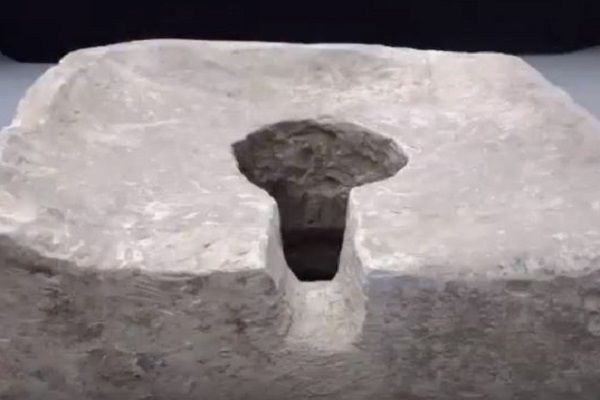
Biblical toilet placed in temple was “the ultimate desecration” to end the cult who worshipped Ba’al.
Another archaeological find has served to prove that what is written in the Bible is a historical account of deeds and actions that took place millennia ago. The second book of Kings in scripture notes King Hezekiah’s efforts in eradicating pagan cults such as those that worshipped Ba’al, a pagan god mentioned several times in the Bible. For instance, 2 Kings 10 says: “Then they demolished the pillar of Ba'al, and destroyed the temple of Ba'al, and made it a latrine to this day.” While excavating the gate-shrine of Lachish, the Israel Antiquities Authority (IAA) stumbled across an actual latrine that was built onto the shrine, rendering it unclean and also providing evidence backing up the claims made in 2 Kings.
Archaeologists Found Biblical Toilet that Destroyed a Cult[/tweetthis]
There were other artifacts found on the site, estimated to be from the First Temple period, 8th century BCE that backed up other Biblical accounts as well. The excavation site was in the Lachish National Park. The gate-shrine is not an entirely new find, given that the northern section of the gate was discovered and excavated decades ago. However, the current excavation that resulted in the amazing toilet find was done in order to expose the entirety of the structure.
Sa’ar Ganor, director of the archaeological dig remarked, “An opening was exposed in the corner of the room that led to the holy of holies…..To our great excitement, we found two four-horned altars and scores of ceramic finds consisting of lamps, bowls, and stands in this room. It is most interesting that the horns on the altar were intentionally truncated! That is probably evidence of the religious reform attributed to King Hezekiah, whereby religious worship was centralized in Jerusalem, and the cultic high places that were built outside the capital were destroyed: ‘He removed the high places, smashed the sacred stones, and cut down the Asherah poles… (II Kings 18:4).’ ” The toilet was installed as “the ultimate desecration of that place.”
Biblical passages attest to the importance and central place that city gates had in the lives of the people in ancient times. Kings and judges and priests all held court at the gates. There were special benches where these officials would sit, hold meetings and make important decisions. This was strategic as it allowed important government officials to have a snapshot of the entire city by seeing who and what was coming in or going out at any one time.
Below is a 2,700 year old toilet. It was found in the ancient city of Lachish. Read this text and then read this… https://t.co/eSe5YjqTq5
— davidsulcer (@DSulcer) September 28, 2016
As an important meeting point, it is therefore in order for a city gate to have served as a shrine as well. These city gates were usually big, with the Lachish gate measuring 24.5m by 24.5m and a height of 4m. Lachish was a big and major city, second only to Jerusalem. Explaining the significance of their findings, Ganor said, “A stone fashioned in the shape of a chair with a hole in its center was found in the corner of the room. Stones of this type have been identified in archaeological research as toilets. Evidence of abolishing cultic locations by installing a toilet in them is known in the Bible, as illustrated in the case of Jehu destroying the cult of Ba’al in Samaria.”
Laboratory tests were done on the toilet and the results imply that it was never used, thus its installation was only symbolic in nature. However, that was more than enough to completely desecrate the shrine and ensure that it would never be used again.
